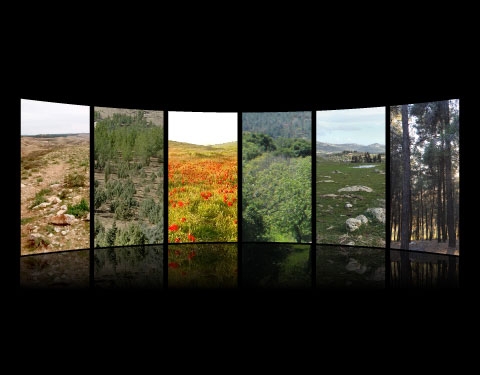A global network of measurement sites coordinated by NOAA/ESRL (see Links) conducts sustained observations related to source and sink strengths, trends and global distributions of atmospheric constituents that are capable of forcing change in the climate of Earth through modification of the atmospheric radiative environment.
The network accomplishes this mission primarily through long-term measurements of key atmospheric species at sites spanning the globe (see map). These key species include carbon dioxide, carbon monoxide, methane, nitrous oxide, hydrogen, SF6, as well as the isotopic composition of CO2 (analyzed by INSTAAR; see Links). The measurements are of the highest quality and accuracy possible, and document global changes in key atmospheric species, which are all affected by mankind, identifying sources of interannual variability.
The data are used to assess climate forcing, ozone depletion and baseline air quality, to develop and test diagnostic and predictive models, and to keep the public, policy makers, and scientists abreast of the current state of our chemical and radiative atmosphere.
The data reported here were collected in the framework of the atmospheric sampling coordinated by NOAA-ESRL-GMD. The data are made freely available to the public and the scientific community in the belief that their wide dissemination will lead to greater understanding and new scientific insights. The availability of these data does not constitute publication of the data. NOAA relies on the ethics and integrity of the user to assure that ESRL and the cooperating laboratory at the Weizmann Institute of Science (WIS lab) receive fair credit for their work. If the data are obtained for potential use in a publication or presentation, ESRL and the WIS lab should be informed at the outset of the nature of this work. If the ESRL data are essential to the work, or if an important result or conclusion depends on the ESRL data, co-authorship may be appropriate. This should be discussed at an early stage in the work. Manuscripts using the ESRL data should be sent to ESRL for review before they are submitted for publication so we can insure that the quality and limitations of the data are accurately represented.
Every effort is made to produce the most accurate and precise measurements possible. However, we reserve the right to make corrections to the data based on recalibration of standard gases or for other reasons deemed scientifically justified. We are not responsible for results and conclusions based on use of these data without regard to this warning.

Cooperative Network: An international effort to make regular discrete samples from a globally distributed network of sites. Air samples are collected approximately weekly which are analyzed for the amounts of multiple gases and for the stable isotopes of CO2 and CH4.


